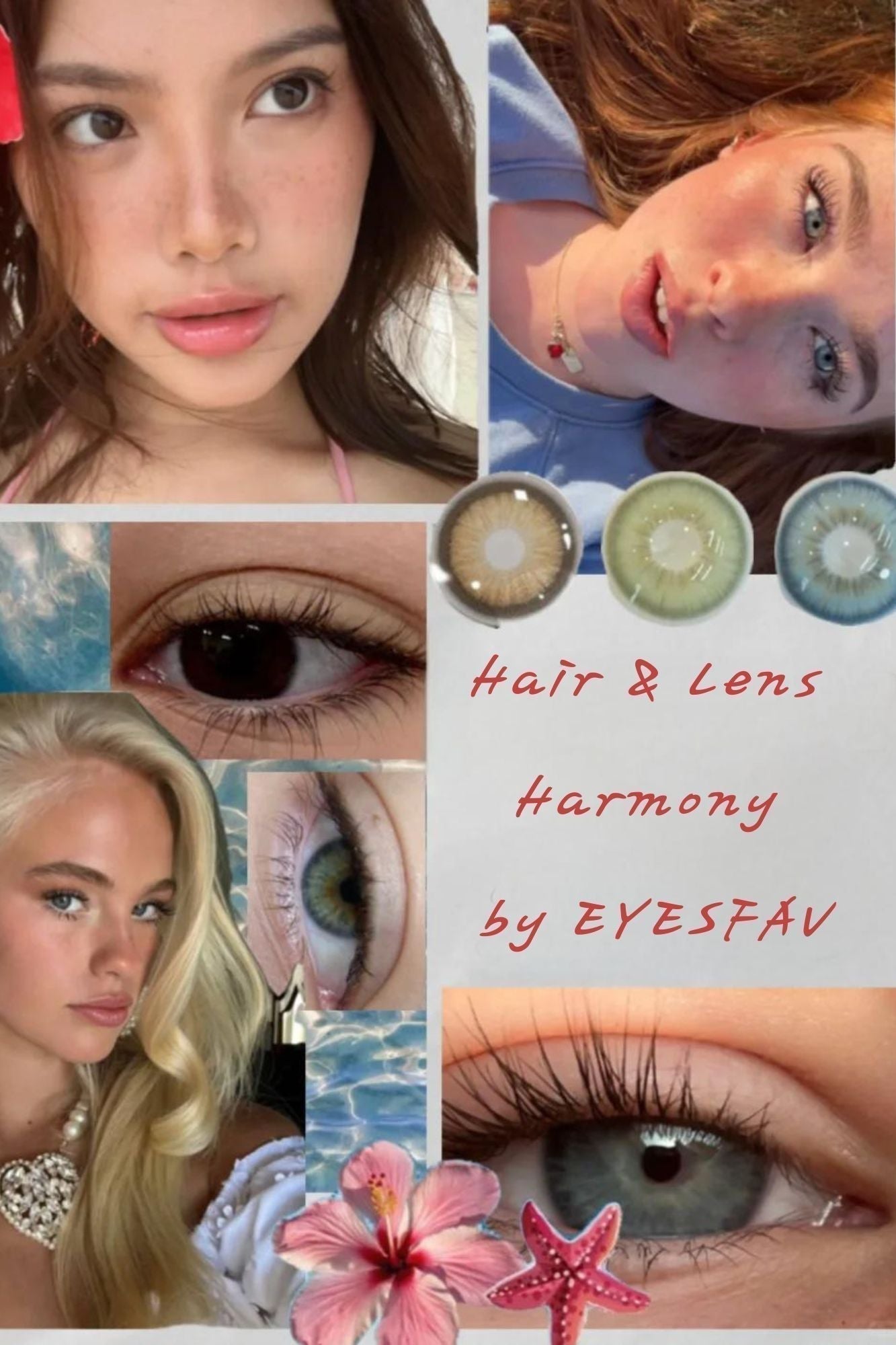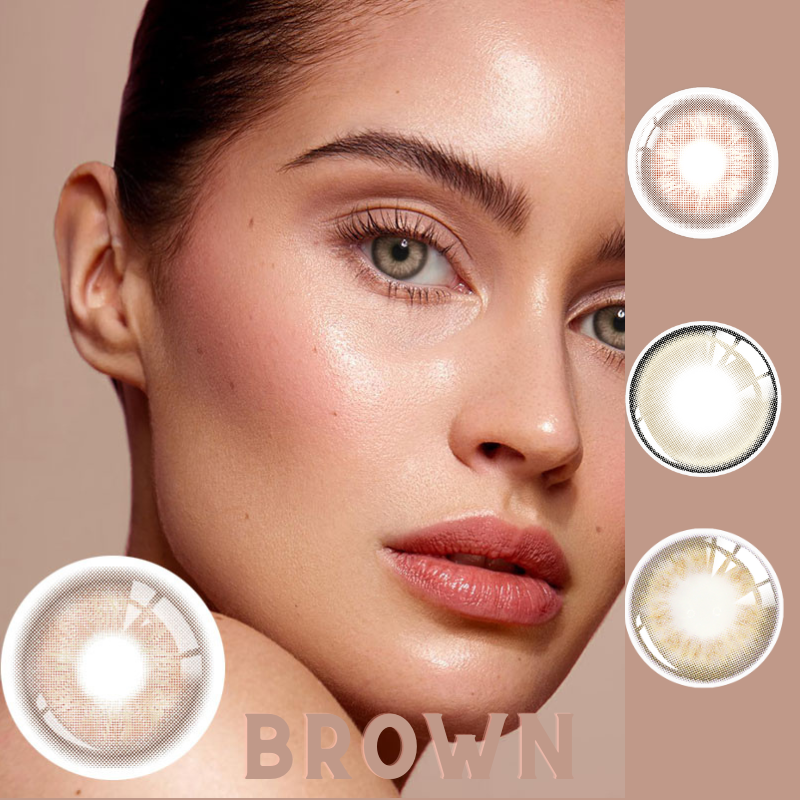Table of Contents:
Contact lenses are a widely used, convenient solution for vision correction. Whether you’re nearsighted, farsighted, or have astigmatism, contact lenses offer a practical alternative to glasses. But how do these small, thin devices actually work to give you clear vision? Behind their simplicity lies a sophisticated optical design, tailored to correct refractive errors by altering the way light enters your eyes. In this article, we'll explore the mechanics of how contact lenses work, their various types, and the materials used to ensure both vision correction and comfort.
Understanding Vision and Refractive Errors
To grasp how contact lenses correct vision, it’s essential first to understand how vision itself works. Under normal conditions, light enters the eye through the cornea, passes through the pupil, and is finely focused by the crystalline lens onto the retina. Specifically, the light must converge on a precise point called the fovea, located in the center of the retina, to produce clear vision.
However, in cases of refractive errors such as myopia (nearsightedness), hyperopia (farsightedness), and astigmatism, the light fails to focus correctly on the retina. In myopia, the focal point occurs in front of the retina, causing distant objects to appear blurry. Hyperopia, on the other hand, occurs when the focal point falls behind the retina, leading to difficulty seeing objects up close. Astigmatism is a more complex error where the cornea's irregular shape causes light to focus at multiple points rather than a single one, leading to distorted vision. Contact lenses are specifically designed to correct these refractive errors by refocusing light onto the fovea.

Working Principle of Contact Lenses
The primary goal of any vision correction method, whether it be glasses or contact lenses, is to refocus light accurately onto the fovea. This is achieved by bending (refracting) light in such a way that the focal point is realigned with the retina. Contact lenses, like glasses, use the principle of refraction to correct the eye's natural focusing error.
For example, in the case of myopia, a diverging lens with negative dioptric power is used to move the focal point further back, so it aligns with the retina. Conversely, for hyperopia, a converging lens with positive dioptric power is employed to bring the focal point forward. The strength of the lens required to correct these errors is measured in diopters—a unit that quantifies the refractive power of a lens.
It’s important to note that even minor deviations in the point of focus can result in blurry vision. A shift of just a millimeter from the ideal focus point can result in significant visual disturbances, which is why precision in determining the necessary dioptric power is critical.
Types of Contact Lenses and Their Specific Functions
Contact lenses come in various forms, each tailored to correct specific refractive errors:
1. Spherical Lenses
These lenses are used to correct simple refractive errors like myopia and hyperopia. They have a single, uniform power across the lens, designed to shift the focal point to the correct position on the retina. These lenses can rotate freely on the eye without affecting vision quality.
2. Toric Lenses
Toric lenses are designed to correct astigmatism. Unlike spherical lenses, toric lenses have different powers in different meridians of the lens, which allows them to correct the dual focus points created by an astigmatic eye. These lenses must remain stable on the eye to correct vision properly, and many designs include features like stabilization zones to ensure they don’t rotate.
3. Multifocal Lenses
As people age, they may develop presbyopia, a condition where the eye loses its ability to focus on near objects. Multifocal lenses are designed to correct this condition by incorporating multiple zones of focus within the lens, allowing the wearer to see both near and far objects clearly. The design varies by manufacturer, but the general principle is that the lens allows the eye to "share" both near and far vision through different areas of the optical zone.
Design and Materials of Contact Lenses
Modern contact lenses are crafted from advanced materials that enhance both vision and comfort. The first significant innovation in contact lens materials came with the introduction of hydrogels, which are soft, flexible plastics that absorb water. This water absorption is crucial because it allows oxygen to pass through the lens to the cornea, which is vital for maintaining corneal health.
The next major leap occurred with the development of silicone hydrogel lenses. Silicone hydrogel materials are more porous than standard hydrogels, allowing even more oxygen to reach the cornea. This improvement in oxygen permeability has made silicone hydrogel lenses the preferred choice for many, particularly those who wear contact lenses for extended periods.
Fitting and Adapting Contact Lenses
The process of fitting contact lenses is much more complex than simply matching the prescription of a pair of glasses. Contact lenses must fit the eye correctly, ensuring that they not only correct vision but also provide comfort and maintain eye health.
When fitting contact lenses, eye care professionals measure the base curve—the curvature of the back surface of the lens, which should closely match the natural curve of the cornea. The diameter of the lens is also important to ensure that it covers the entire cornea while maintaining a secure and comfortable fit. The combination of the base curve and diameter parameters ensures that the optical zone of the lens aligns perfectly with the pupil, where light passes through to reach the retina.








